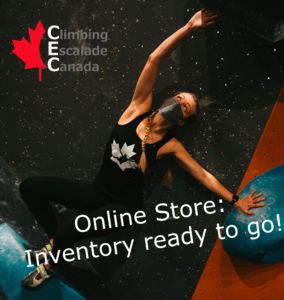Climbing Escalade Canada (CEC) is committed to supporting positive environments for participation in sport climbing at all levels of abilities. With the help of the Para-Climbing Committee, CEC will develop Para-Climbing programs and education over the next few years.
Para-Climbing
Follow Us on Instagram
And now, introducing the Support Team that will play a crucial role in the success of the 2024 @paraclimb_canada National Team!
Et maintenant, voici l'équipe de soutien qui jouera un rôle crucial dans le succès de l'équipe nationale de @paraclimb_canada 2024 !
@jazzyjwats @polkadottedshmuck @pattihoddinott17 @waynegearey
@ifsclimbing @arcteryx ...
🎉 Introducing our 2024
@paraclimb_canada National Team Athletes! These empowered athletes will show you how it's done this season!
🥳 Voici nos athlètes de l'équipe nationale 2024 @paraclimb_canada ! Ces athlètes inspirants vous montreront comment faire cette saison !
Salt Lake City WC, May 7-8
Innsbruck WC, June 24-25
Arco WC, September 27-28
🇨🇦 Go Team Canada! 🇨🇦
@ifsclimbing
@arcteryx
@carly.proppe @theblindexplorer @emm_mcdermott @gimpin.and.still.crimpin @kevin_bolusi @miranda.elimpabeth @nicolassabia @shamus.b.climbing @blindape2023 ...
Another shout out, this time to our Eastern Regionals Participants! What a weekend that was!
All results available through le link in bio / Tous les résultats sont disponibles via le lien en bio.
Un autre coup de chapeau, cette fois-ci à nos participants aux Régionaux de l'Est ! Quel week-end ce fut !
@betabloc
📸 @20100_the.npc.man ...
Congratulations to all who attended the Western Youth Regionals this weekend! We hope everyone had a great time!
All results available through the link in bio / Tous les résultats sont disponibles via le lien en bio.
Félicitations à tous ceux et celles qui ont participé aux Championnats régionaux juvéniles de l'Ouest ce week-end ! Nous espérons que tout le monde s'est bien amusé !
@bolderclimbing ...


